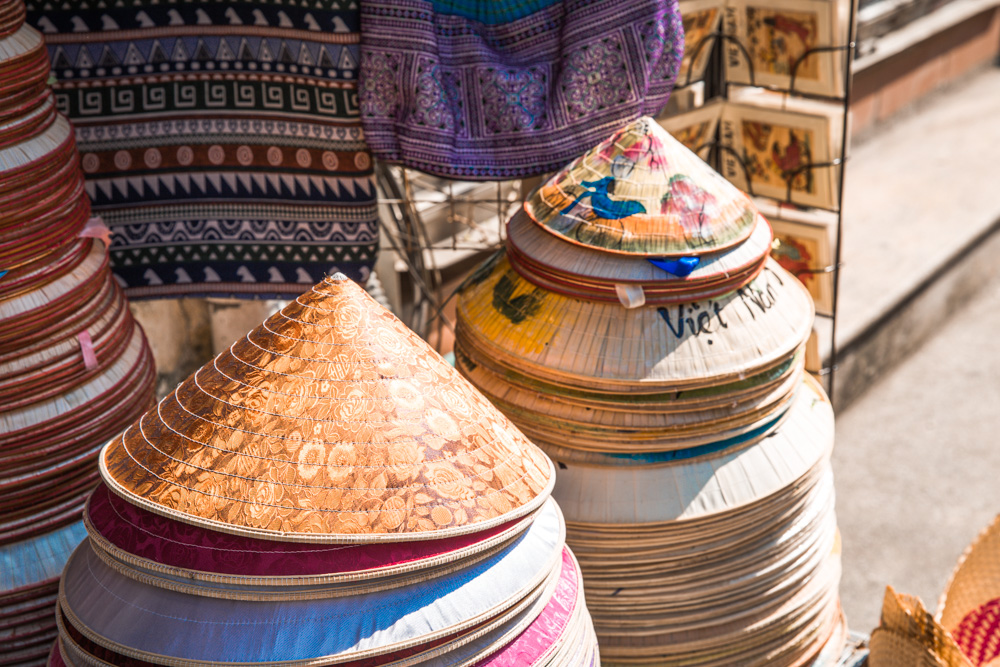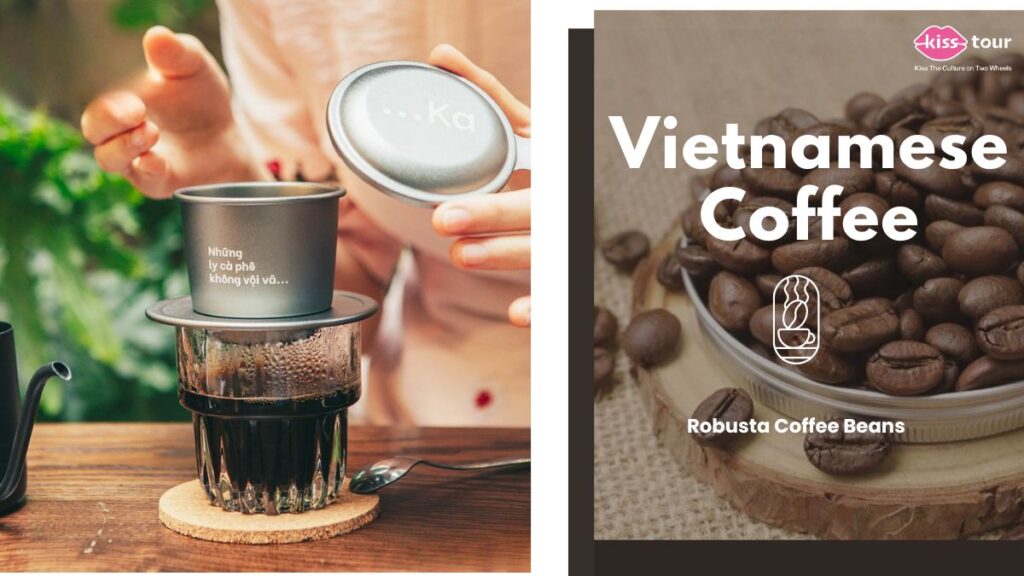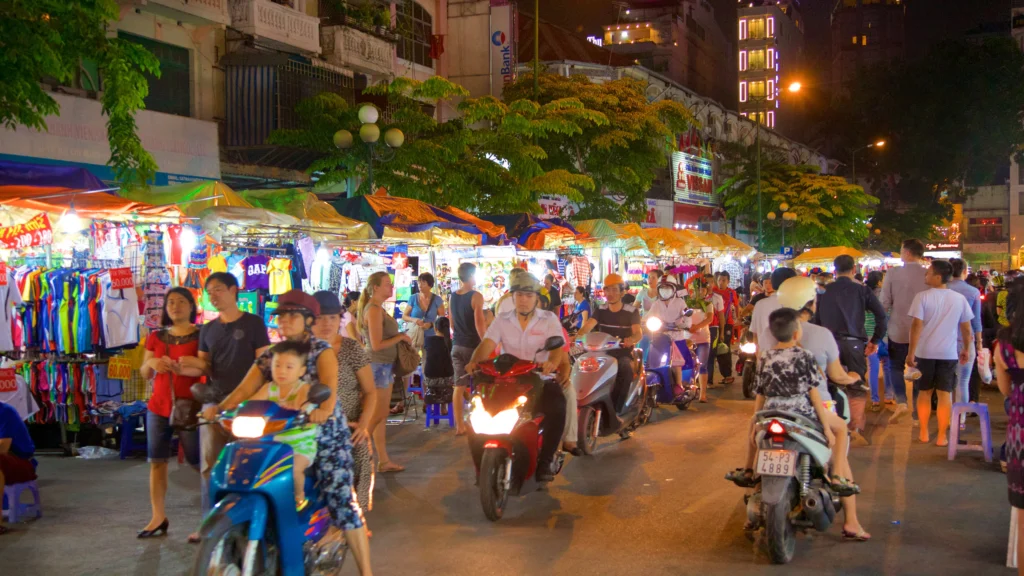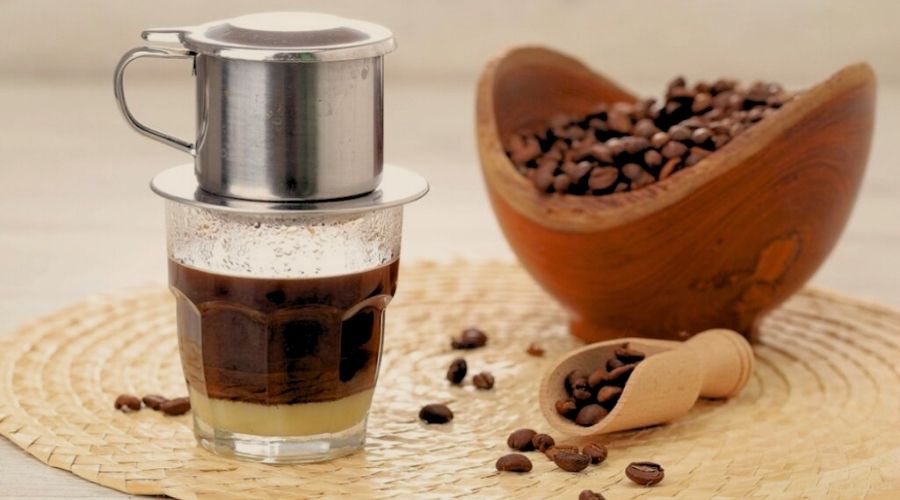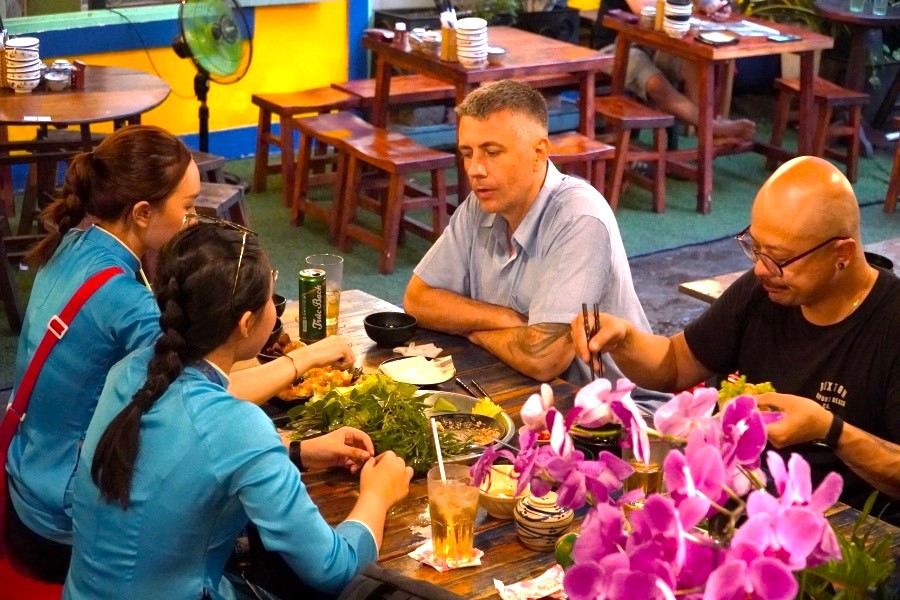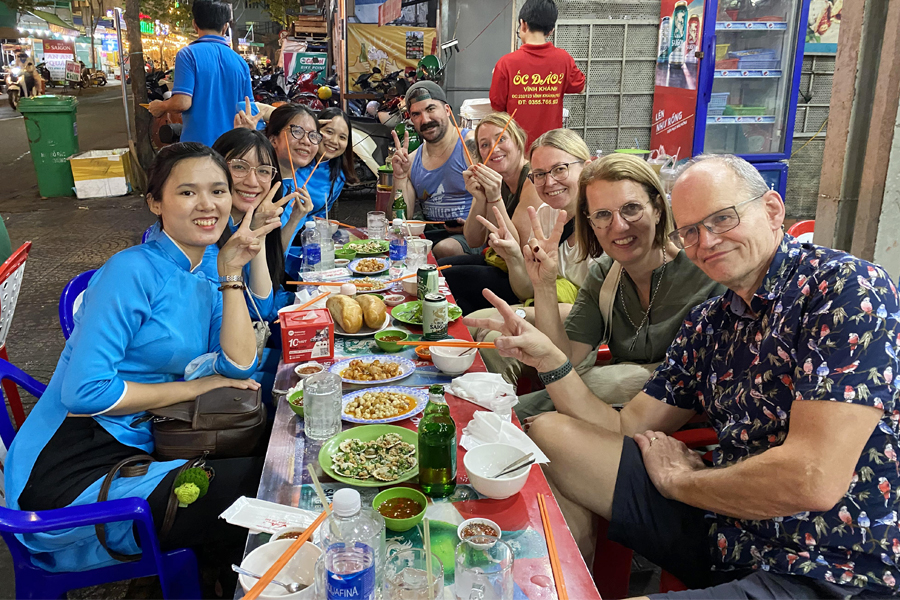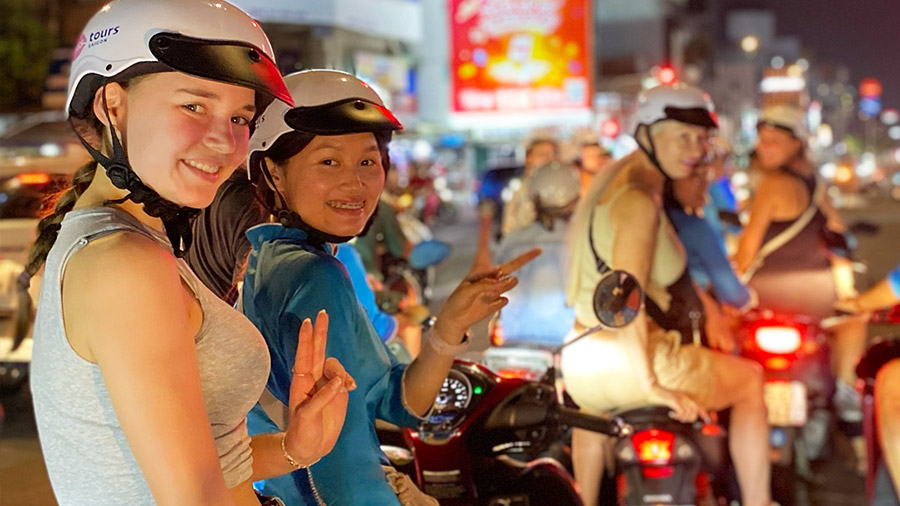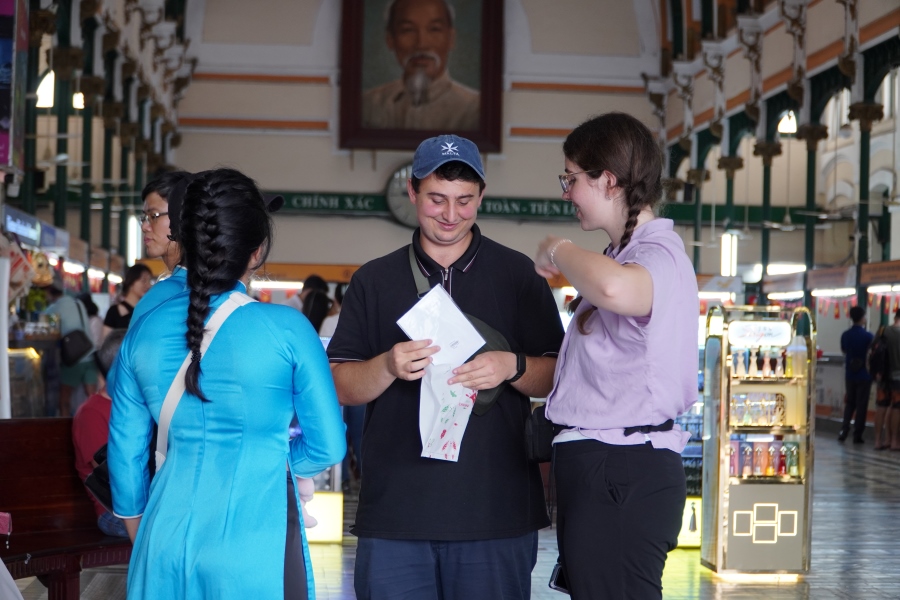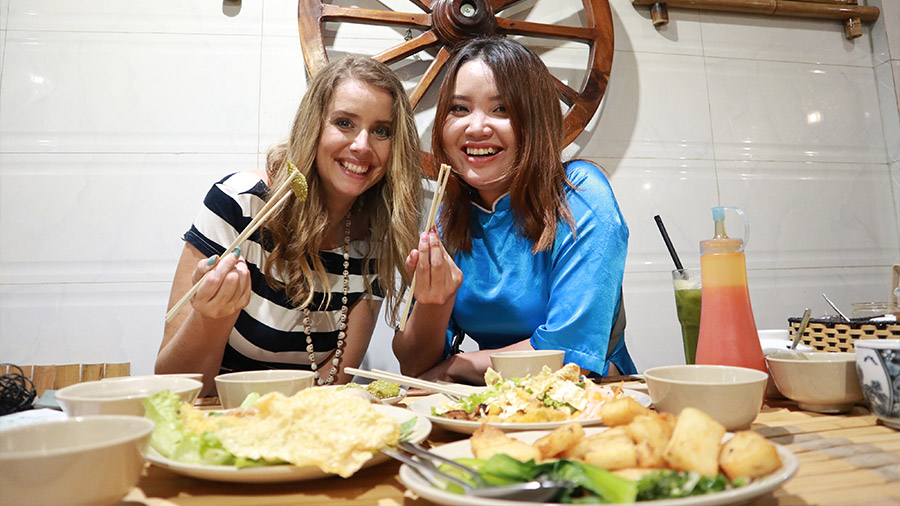Shopping in Vietnam is an adventure itself whether it’s silk scarves from Hanoi, lanterns from Hoi An, or coffee beans from the Central Highlands, every souvenir is a story you can bring home.
Vietnam is not only famous for its breathtaking landscapes, vibrant cities, and rich history, but also for the unique shopping experience it offers travelers. From handmade crafts passed down through generations to mouthwatering food specialties that capture the essence of local cuisine, the country is filled with meaningful souvenirs. Bringing something home from Vietnam is more than just a shopping activity, it’s a way of carrying a piece of the culture and memory of your journey.
This guide will help you explore what to buy in Vietnam, where to shop, and practical tips to make your shopping experience smooth and enjoyable.
>>> For those visiting Saigon, the lively Things to Do in Ho Chi Minh City for 3 days list will help you combine shopping with sightseeing
1. Traditional Handicrafts
Handicrafts are among the most popular items for travelers to bring back. Each piece tells a story of the region it comes from, often created using techniques that have been preserved for centuries.
Silk and Embroidery
Vietnamese silk is soft, lightweight, and incredibly versatile. Villages such as Van Phuc Silk Village near Hanoi or local silk shops in Hoi An are renowned for their craftsmanship. Whether you buy a scarf, tie, or even a tailor-made Áo Dài (Vietnam’s national dress), silk products are elegant gifts that reflect Vietnam’s artistry.
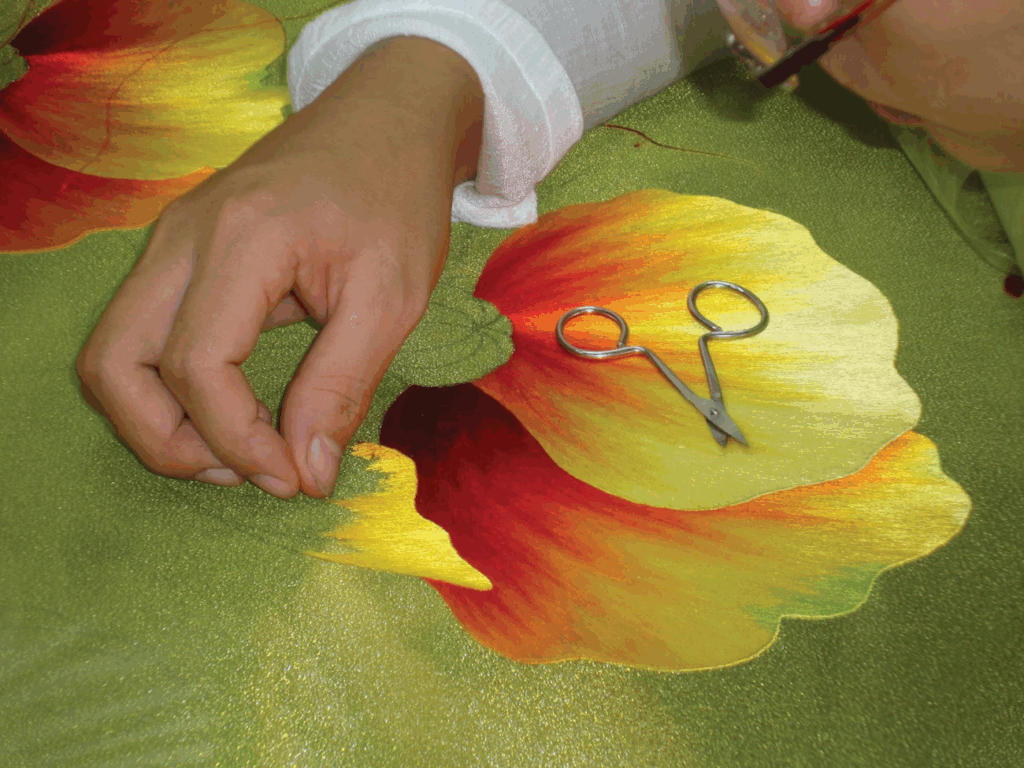
Embroidery is another specialty. From pillowcases to wall hangings, embroidered items often depict daily life, lotus flowers, or rural landscapes. These make unique home décor pieces and are highly valued by collectors.
Where to buy:
- Van Phuc Silk Village (Hanoi): The oldest silk village in Vietnam, only 30 minutes from Hanoi’s Old Quarter.
- Hoi An Silk Village: Offers workshops where you can see silkworms and weaving demonstrations.
- Tailor shops in Hoi An: Many tailors specialize in making áo dài or suits from silk within a few days.
Lacquerware and Mother-of-Pearl Inlay
Vietnamese lacquerware is admired worldwide for its glossy finish and durability. Items range from bowls and trays to jewelry boxes, all featuring traditional designs. In cities like Hanoi and Ho Chi Minh City, you’ll find shops selling high-quality lacquer products.

Mother-of-pearl inlay, often combined with wooden furniture or jewelry boxes, adds a luxurious touch. It’s delicate, so you’ll need to pack carefully, but it’s one of the most striking examples of Vietnamese craftsmanship.
Where to buy:
- Hanoi’s Old Quarter: Dozens of craft shops sell authentic lacquerware.
- Ho Chi Minh City: District 1’s Dong Khoi Street has boutique stores offering high-end designs.
Bamboo and Rattan Goods
Eco-friendly souvenirs are becoming increasingly popular. From woven baskets and trays to lampshades and handbags, bamboo and rattan items are both functional and beautiful. They embody Vietnam’s connection to nature and sustainable living.

Where to buy:
- Dong Xuan Market (Hanoi): Wide selection of bamboo household items.
- Ben Thanh Market (Saigon): Popular for tourists, though bargaining is necessary.
Ceramics and Pottery
If you’re visiting Hanoi, a trip to Bat Trang Ceramic Village is a must. Known for its centuries-old pottery tradition, Bat Trang offers everything from small cups and bowls to large decorative vases. Each piece is handmade, making it truly one-of-a-kind.

Where to buy:
- Bat Trang Ceramic Village (near Hanoi): You can even try making pottery yourself.
- Thanh Ha Pottery Village (Hoi An): Known for terracotta products and the Terracotta Park museum.
>>> Finding souvenirs shop in Ho Chi Minh City? Check out in this video!
2. Local Food Specialties
Food is an essential part of Vietnamese culture, and many local specialties make excellent gifts.
Vietnamese Coffee
Vietnam is the world’s second-largest coffee exporter, and coffee culture here is unique. Buying robusta beans or pre-ground coffee allows you to recreate the famous cà phê sữa đá (iced coffee with condensed milk) at home. For an authentic touch, pick up a phin filter, the traditional drip tool used by locals.
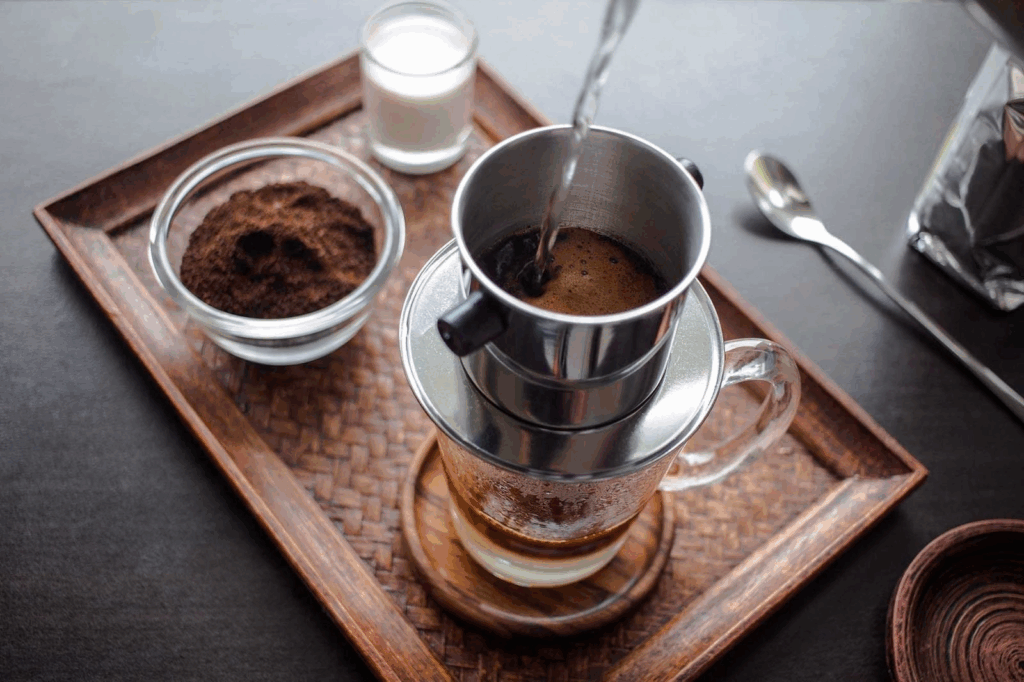
Where to buy:
- Trung Nguyen Legend (nationwide): Vietnam’s most famous coffee chain.
- Cong Caphe (big cities): Fun, retro-themed cafés that also sell packaged coffee.
- Highlands Coffee: Convenient and widely available.
Tea Varieties
Vietnam is also home to diverse tea-growing regions. Lotus tea, infused with lotus blossoms, offers a fragrant, calming taste. In the northern mountains, ethnic groups produce green tea and oolong tea, prized for their fresh and floral flavors.

Where to buy:
- Thai Nguyen province: Famous for green tea plantations.
- Specialty tea shops in Hanoi Old Quarter.
Spices, Sauces, and Condiments
For those who love cooking, Vietnamese spices and sauces are perfect souvenirs. Consider chili paste, lemongrass powder, star anise, or cinnamon from the highlands. A bottle of premium nước mắm (fish sauce) is also a signature Vietnamese flavor, though you should check airline regulations before carrying liquids.
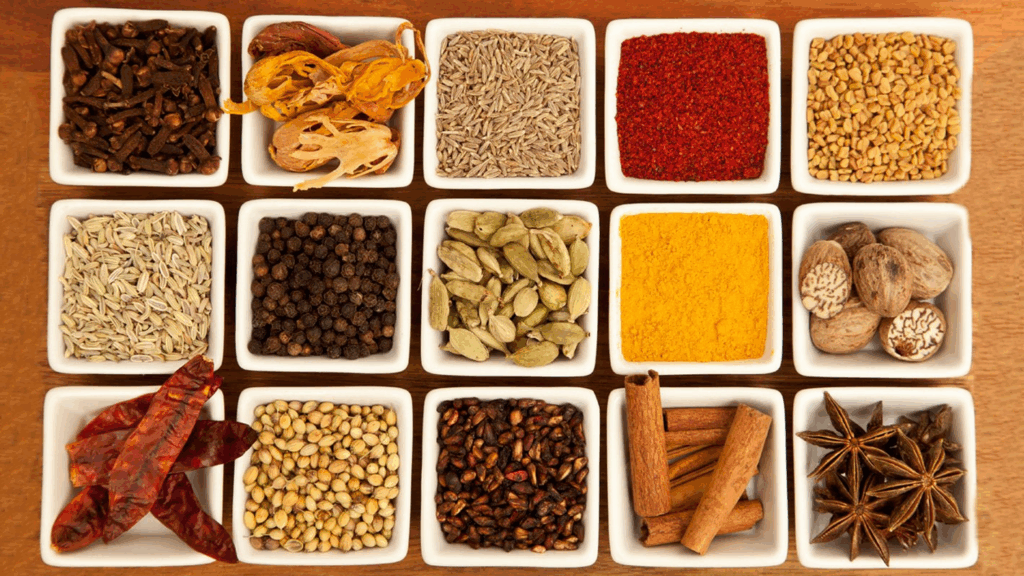
Where to buy:
- Ben Thanh Market (Ho Chi Minh City): A great place for spices, chili sauces, and dried herbs.
- Dong Ba Market (Hue): Famous for shrimp paste and local condiments.
Dried Fruits and Snacks
Hạt điều (cashew nuts), dried mango, banana chips, and coconut candies are popular choices. They’re light, easy to pack, and perfect for sharing with friends and family.


Where to buy:
- Mekong Delta floating markets (Cai Rang, Phong Dien): Dried fruits and coconut candy.
- Cholon (Saigon’s Chinatown): Well-known for traditional snacks and herbal teas.
>>> For the ultimate taste experience, check out our Top 10 Michelin Restaurants in Ho Chi Minh City
3. Fashion and Cultural Attire
Clothing in Vietnam is not just practical – it often carries cultural and historical meaning.
Áo Dài: Vietnam’s National Dress
The áo dài is the most iconic outfit of Vietnam. Tourists can buy ready-made versions in local shops, or even have one tailor-made in cities like Hoi An. It’s elegant, symbolic, and makes for a memorable keepsake.
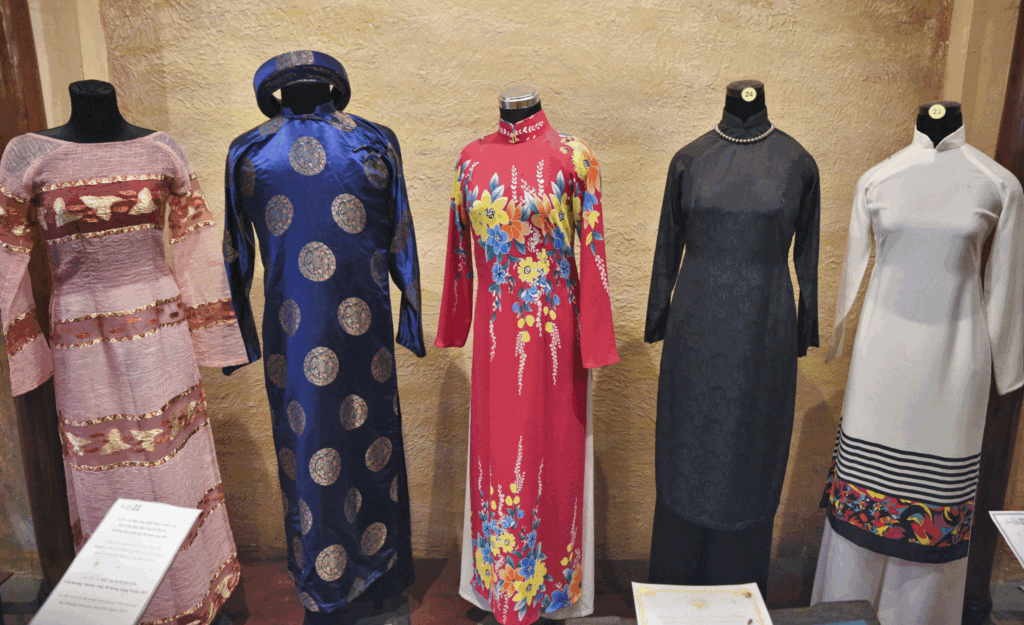
Where to buy:
- Custom-tailoring shops in Hoi An, Hanoi, or Ho Chi Minh City, such as Viet Thuong Tailor in Hoi An or Ao Dai Boutique in Hanoi.
- Ready-to-wear options are available at markets like Ben Thanh Market and Dong Xuan Market.
Ethnic Minority Textiles
In the northern highlands, ethnic minority groups like the Hmong and Dao produce colorful textiles using traditional weaving and dyeing techniques. Items such as handbags, scarves, and decorative fabrics showcase Vietnam’s cultural diversity.

Where to buy:
- Sapa (Lao Cai province): Local Hmong markets sell hand-woven scarves, skirts, and bags.
- Bac Ha Sunday Market: Famous for colorful brocade and ethnic fashion.
Everyday Fashion and Accessories
Vietnam is also known for its affordable tailor services. In Hoi An especially, you can have custom-made clothing in just a few days. Leather bags, belts, and shoes from Saigon markets are also excellent buys.
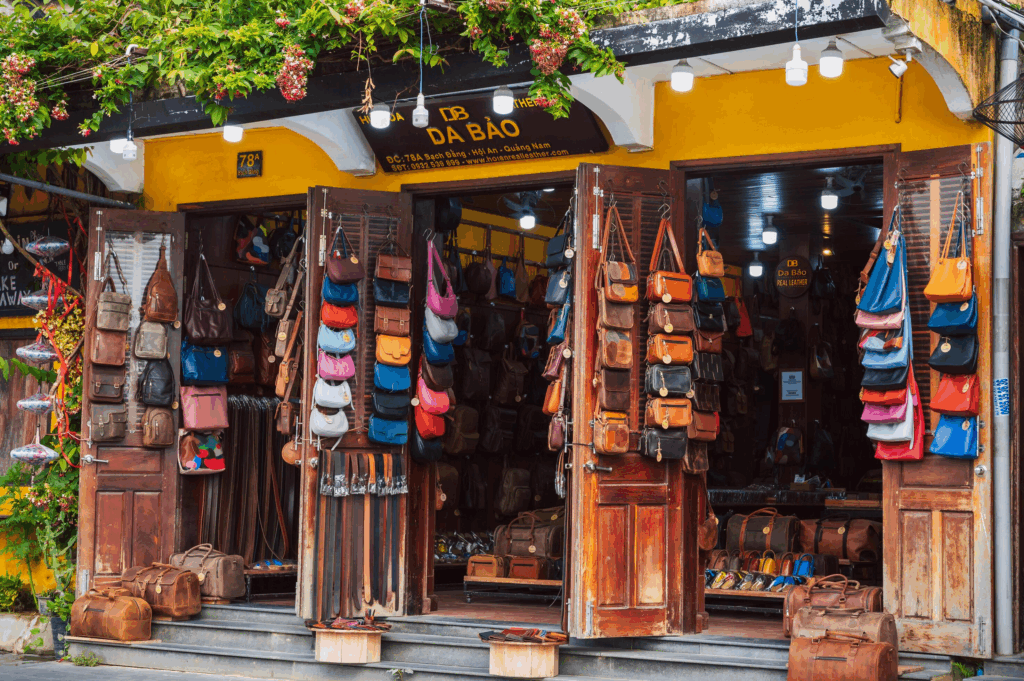
4. Unique Souvenirs: Beyond the Ordinary
Not all souvenirs have to be traditional, sometimes quirky items make the best gifts.
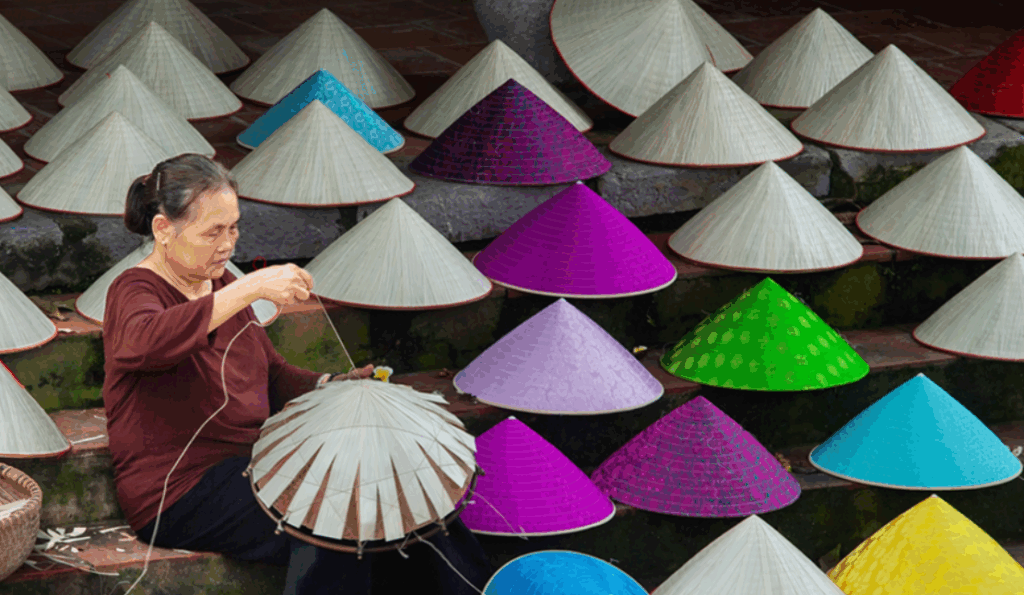
A symbol as iconic as the Ao Dai, nón lá or conical hat is both practical and poetic. Originally worn by farmers and market vendors for sun and rain protection, it’s now a beloved symbol of Vietnamese heritage and a favorite among tourists. Besides, it’s so affordable even among those cheap things to buy in Vietnam.
Lightweight, compact, and instantly recognizable, the Non La makes for a charming souvenir or photo prop that captures the essence of daily life in Vietnam.
Where to buy:
- Street markets or artisan shops throughout Vietnam, especially in Hoi An.
- Villages like Chuong (Hanoi), Phu Cam, and Tay Ho (Hue) are also known for them.

Water puppetry (mua roi nuoc) is a traditional Vietnamese performance art that originated in the rice paddies of the Red River Delta. The hand-carved wooden puppets used in these shows are not only charming collectibles but also a fun way to share Vietnamese folklore.
These puppets are rich in character and history. They represent iconic Vietnamese figures like farmers, dragons, and fairies, and serve as both souvenirs and cultural education tools.
Common puppet types:
- Traditional characters: Buffalo boys, dancers, farmers
- Mythical creatures: Dragons, phoenixes
- Miniature replicas: Designed for decoration rather than performance
Where to buy: It is a little harder to find these hidden gems, however, try follow these locations:
- Local craft shops near the Hoi An Water Puppet Show
- Thang Long Water Puppet Theatre gift shop in Hanoi

Vietnamese calligraphy artwork, or thư pháp, is an art form that transforms written words into visual poetry, especially around Tet (Lunar New Year). Using elegant brush strokes and poetic verses, artists create visual expressions of blessings, wisdom, and good fortune.
These pieces serve as both aesthetic and spiritual gifts. The messages often feature Buddhist or Confucian sayings and are perfect for displaying in homes or offices.
Where to buy:
- Temples and pagodas, traditional art villages like Van Phuc Silk Village (Hanoi), Phuoc Tich Village (Hue)
- Dong Xuan Market and Ben Thanh Market for pre-written arts
- Temple of Literature (Hanoi) is a popular spot during festivals, you can buy a well-written piece of calligraphy by the masters there
>>> READ MORE: Where to buy souvenirs in Ho Chi Minh City?
5. Art and Home Décor
Vietnamese art reflects the country’s vibrant culture and history.
- Paintings: Visit Dong Phong Art Gallery (Hanoi) or Galerie Quynh (Saigon) for contemporary pieces.
- Wood Carvings: Non Nuoc Marble Village (Da Nang) specializes in statues and carvings.
- Lacquer Paintings: Found in fine art galleries on Hang Gai Street (Hanoi).
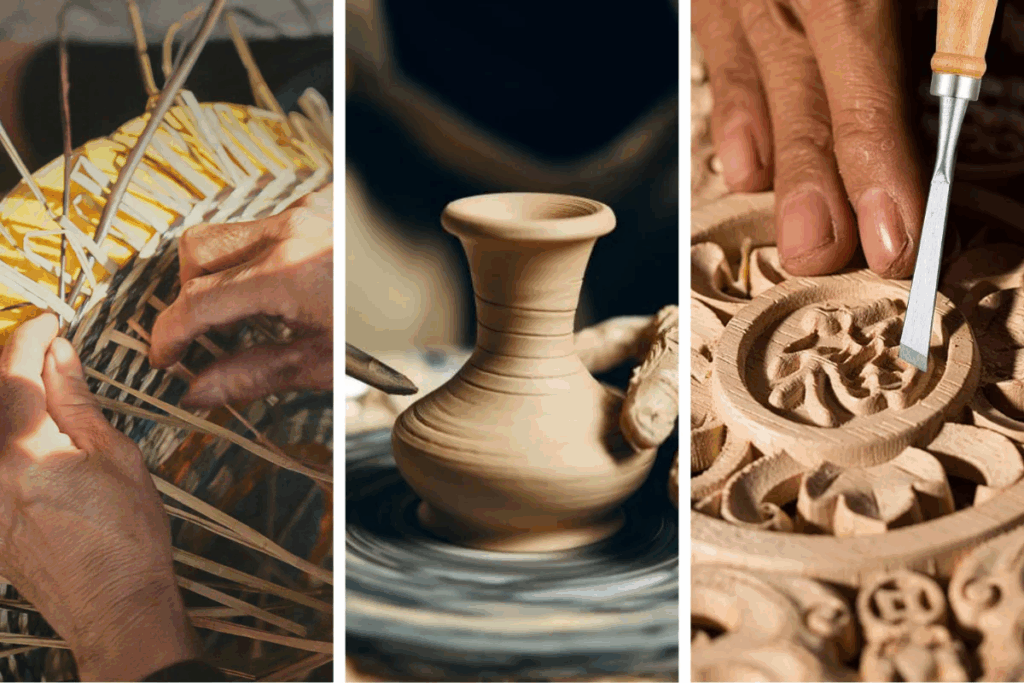
6. Where to Find the Best Deals
- Ben Thanh Market (Ho Chi Minh City): Iconic, bustling, great for handicrafts, spices, and souvenirs. Open daily 6 AM – 6 PM; best to visit early morning.
- Dong Xuan Market (Hanoi): Largest covered market, known for fabrics, handicrafts, coffee, and street food. Open daily 6 AM – 6 PM; best for late morning.
- Hoi An Night Market/Central Market: Excellent for lanterns, silk, and local crafts.
- Binh Tay Market (Ho Chi Minh City): Less touristy, great for authentic and affordable dried goods, ceramics, and local cuisine. Open daily 6 AM – 7 PM; best for early morning.
- Sapa Market: Ideal for traditional textiles from ethnic minorities.
7. Shopping Tips for Travelers
- Bargaining: At traditional markets, haggling is expected. Be polite and friendly while negotiating.
- Check Quality: Look for authenticity labels, especially with silk, silver, or lacquerware.
- Pack Smart: Fragile items like ceramics should be hand-carried or wrapped carefully.
- Customs Regulations: Verify rules for bringing food or liquids into your home country. Some items like liquids, fresh produce, or wooden artifacts may be restricted.
- Cash is King: While credit cards are accepted in large shops, cash (VND) is often required in local markets.
Conclusion: Bringing Vietnam Home
Shopping in Vietnam is more than buying souvenirs, it’s about connecting with the culture, artisans, and traditions of the country. Whether it’s a cup of strong coffee, a piece of handwoven fabric, or a handcrafted ceramic bowl, each item you bring home carries the warmth and charm of Vietnam.
Next time you’re wondering what to buy in Vietnam, remember that the best souvenirs are those that tell a story. Choose items that speak to you, and they’ll serve as lasting reminders of your journey through this beautiful country.
Shopping is just one piece of Vietnam’s vibrant culture. Join Kiss City Tour and Kiss Food Tour to dive deeper: explore historic streets, sample Michelin-recommended bites, and uncover stories behind every market stall. Check out kisstour.com and turn your trip into an unforgettable adventure.
